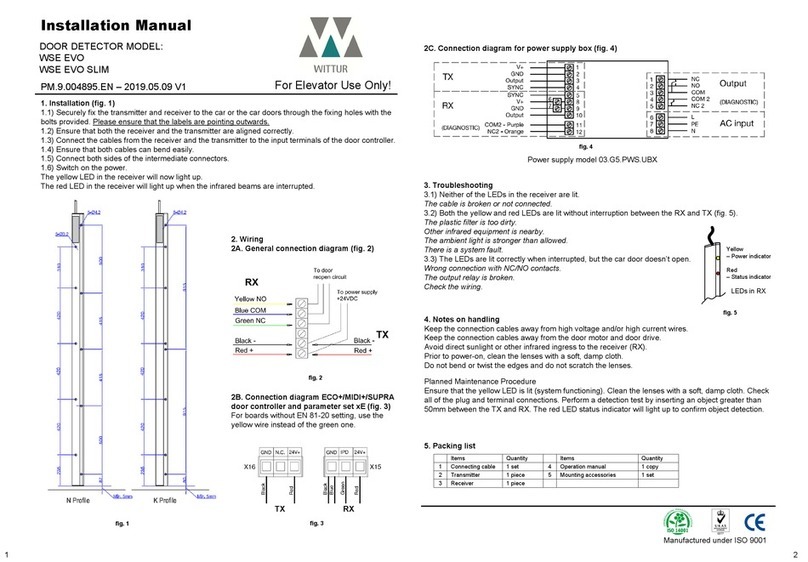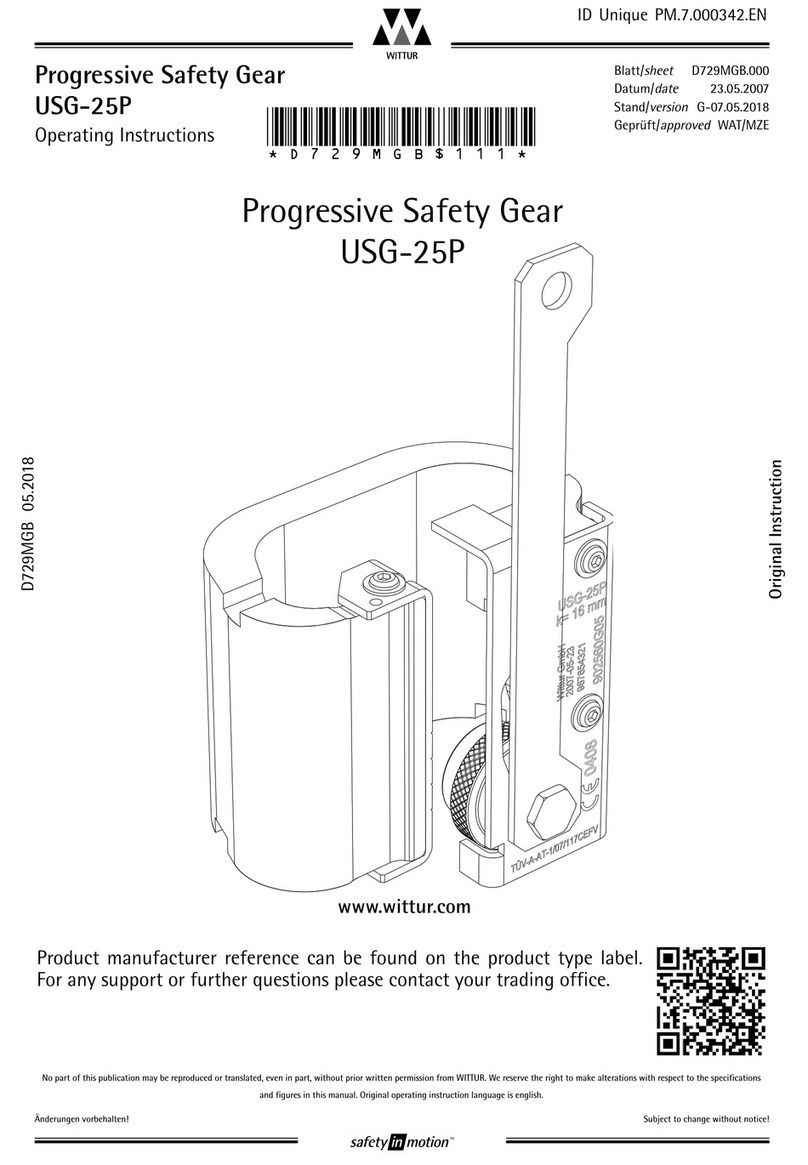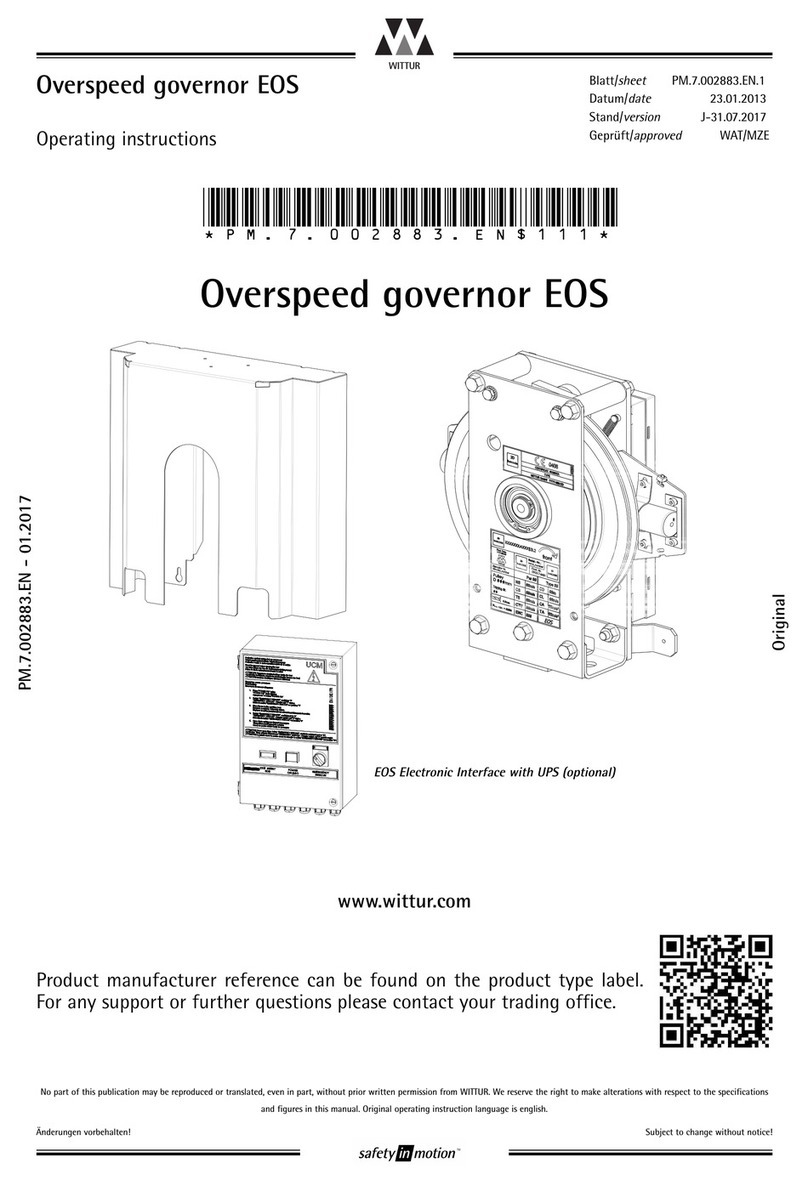`çåíÉåí m~ÖÉ
1 General nformat on pr or to nstallat on . . . . . . . . . . . . . . . . . . . . . . . . . . . . . . .003
1.1 Description and functions . . . . . . . . . . . . . . . . . . . . . . . . . . . . . . . . . . . . . . . . . . . . . . . . . . . . . . .003
1.2 Liability and guarantee . . . . . . . . . . . . . . . . . . . . . . . . . . . . . . . . . . . . . . . . . . . . . . . . . . . . . . . . .004
1.3 Safety precautions . . . . . . . . . . . . . . . . . . . . . . . . . . . . . . . . . . . . . . . . . . . . . . . . . . . . . . . . . . . . .004
1.4 Preparation . . . . . . . . . . . . . . . . . . . . . . . . . . . . . . . . . . . . . . . . . . . . . . . . . . . . . . . . . . . . . . . . . . .005
1.5 Advice for when working on safety components . . . . . . . . . . . . . . . . . . . . . . . . . . . . . . . . . . .005
1.6 Content of supply . . . . . . . . . . . . . . . . . . . . . . . . . . . . . . . . . . . . . . . . . . . . . . . . . . . . . . . . . . . . .006
2 Name plate, des gnat on, dent f cat on . . . . . . . . . . . . . . . . . . . . . . . . . . . . . . . .007
3 Installat on and adjustment . . . . . . . . . . . . . . . . . . . . . . . . . . . . . . . . . . . . . . . . .008
3.1 astening of the safety gear . . . . . . . . . . . . . . . . . . . . . . . . . . . . . . . . . . . . . . . . . . . . . . . . . . . .008
3.2 Movement of the safety gear . . . . . . . . . . . . . . . . . . . . . . . . . . . . . . . . . . . . . . . . . . . . . . . . . . . .008
3.3 Alignment of the safety gear . . . . . . . . . . . . . . . . . . . . . . . . . . . . . . . . . . . . . . . . . . . . . . . . . . . .009
3.4 Safety gear linkage . . . . . . . . . . . . . . . . . . . . . . . . . . . . . . . . . . . . . . . . . . . . . . . . . . . . . . . . . . . .009
3.5 Mounting to the car frame . . . . . . . . . . . . . . . . . . . . . . . . . . . . . . . . . . . . . . . . . . . . . . . . . . . . . .010
3.6 Gripping wedge synchronization and adjustment . . . . . . . . . . . . . . . . . . . . . . . . . . . . . . . . . . .011
4 Funct on test ng . . . . . . . . . . . . . . . . . . . . . . . . . . . . . . . . . . . . . . . . . . . . . . . . . . .012
4.1 Static functions test . . . . . . . . . . . . . . . . . . . . . . . . . . . . . . . . . . . . . . . . . . . . . . . . . . . . . . . . . . .013
4.2 Dynamic functions test . . . . . . . . . . . . . . . . . . . . . . . . . . . . . . . . . . . . . . . . . . . . . . . . . . . . . . . . .014
4.2.1 Gripping test for car safety gear . . . . . . . . . . . . . . . . . . . . . . . . . . . . . . . . . . . . . . . . . .014
4.2.2 Gripping test for counterweight safety gear . . . . . . . . . . . . . . . . . . . . . . . . . . . . . . . .015
4.2.3 Checking safety gear, car and counterweight and returning the elevator to normal
drive . . . . . . . . . . . . . . . . . . . . . . . . . . . . . . . . . . . . . . . . . . . . . . . . . . . . . . . . . . . . . . . . . . . . . .016
4.2.4 Visual checks after a safety gear test . . . . . . . . . . . . . . . . . . . . . . . . . . . . . . . . . . . . . . .016
4.3 Braking mark . . . . . . . . . . . . . . . . . . . . . . . . . . . . . . . . . . . . . . . . . . . . . . . . . . . . . . . . . . . . . . . . .017
4.3.1 Measuring of braking mark . . . . . . . . . . . . . . . . . . . . . . . . . . . . . . . . . . . . . . . . . . . . . . .017
4.3.2 Check of braking mark “s” . . . . . . . . . . . . . . . . . . . . . . . . . . . . . . . . . . . . . . . . . . . . . . . .017
4.3.3 Tolerated gripping distances . . . . . . . . . . . . . . . . . . . . . . . . . . . . . . . . . . . . . . . . . . . . . .018
5 Ma ntenance, nspect on, repa r and d sposal of waste . . . . . . . . . . . . . . . . . . . .021
5.1 Maintenance and inspection . . . . . . . . . . . . . . . . . . . . . . . . . . . . . . . . . . . . . . . . . . . . . . . . . . . .021
5.1.1 General . . . . . . . . . . . . . . . . . . . . . . . . . . . . . . . . . . . . . . . . . . . . . . . . . . . . . . . . . . . . . . . .022
5.1.2 Maintenance and inspection check list . . . . . . . . . . . . . . . . . . . . . . . . . . . . . . . . . . . . .022
5.1.3 Cleaning of guide rails . . . . . . . . . . . . . . . . . . . . . . . . . . . . . . . . . . . . . . . . . . . . . . . . . . .022
5.2 Periodical tests . . . . . . . . . . . . . . . . . . . . . . . . . . . . . . . . . . . . . . . . . . . . . . . . . . . . . . . . . . . . . . . .022
5.3 Operational life time of the safety gears . . . . . . . . . . . . . . . . . . . . . . . . . . . . . . . . . . . . . . . . . .023
5.4 Carrying out repairs . . . . . . . . . . . . . . . . . . . . . . . . . . . . . . . . . . . . . . . . . . . . . . . . . . . . . . . . . . . .023
5.5 Disposal of waste . . . . . . . . . . . . . . . . . . . . . . . . . . . . . . . . . . . . . . . . . . . . . . . . . . . . . . . . . . . . . .024
5.6 Spare parts . . . . . . . . . . . . . . . . . . . . . . . . . . . . . . . . . . . . . . . . . . . . . . . . . . . . . . . . . . . . . . . . . . .025
Progressive Type Safety Gear
CSGB-01 / 02
Operating instructions
Änderungen vorbehalten! Subject to change without notice!
Blatt/ëÜÉÉí PM.7.002505.EN.002
Datum/Ç~íÉ 26.07.2012
Stand/îÉêëáçå `JMSKNNKOMNR
Geprüft/~ééêçîÉÇ WAT/MZE
© WITTUR – All rights reserved






























